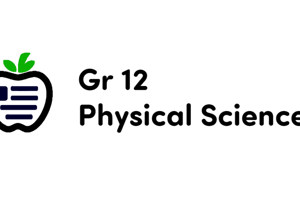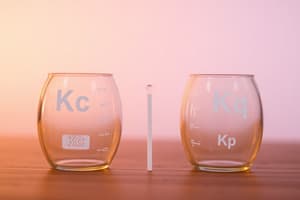Podcast
Questions and Answers
Which office conducts the decennial census in India?
Which office conducts the decennial census in India?
- Planning Commission of India
- National Sample Survey Office
- Office of the Registrar General and Census Commissioner (correct)
- Ministry of Home Affairs
What type of exercise is the census in India?
What type of exercise is the census in India?
- An administrative exercise
- A purely academic undertaking
- An executive exercise with statutory backing (correct)
- A voluntary exercise
How often is the census conducted in India, according to the content?
How often is the census conducted in India, according to the content?
- Every 15 years
- Every 5 years
- Every 20 years
- Every 10 years (correct)
Which ministry does the Office of the Registrar General and Census Commissioner fall under?
Which ministry does the Office of the Registrar General and Census Commissioner fall under?
What is a key feature of the census in India?
What is a key feature of the census in India?
The information gathered in the Census of India is used for
The information gathered in the Census of India is used for
What is statutory backing?
What is statutory backing?
Why is the Indian census considered important?
Why is the Indian census considered important?
What type of information is collected through the census in India?
What type of information is collected through the census in India?
What is one benefit from conducting India's census?
What is one benefit from conducting India's census?
Flashcards
Decennial Census
Decennial Census
A census conducted every ten years.
Registrar General and Census Commissioner
Registrar General and Census Commissioner
The office responsible for conducting the decennial census in India.
Statutory Backing
Statutory Backing
A law or act passed by a legislative body.
Decennial Census Fact
Decennial Census Fact
Signup and view all the flashcards
Study Notes
Chemical Equilibrium Exercises
-
For the reversible elementary reaction $A + B \rightleftharpoons C + D$, the equilibrium concentrations at a given temperature are:
- $[A] = 2.0 , \text{mol/L}$
- $[B] = 3.0 , \text{mol/L}$
- $[C] = 4.0 , \text{mol/L}$
- $[D] = 2.0 , \text{mol/L}$.
- Equilibrium constant $K_c$ is calculated using these values.
-
For the equilibrium $2CO(g) + O_2(g) \rightleftharpoons 2CO_2(g)$ at 727 °C, $K_c = 4.2 \times 10^6$.
- If $[CO] = 1.2 \times 10^{-3} , \text{mol/L}$ and $[CO_2] = 0.100 , \text{mol/L}$ in a sample of exhaust gases at 727 °C, the concentration of $O_2$ in the exhaust can be determined.
-
In a 2-liter container, 4 moles of hydrogen and 3 moles of iodine are placed.
- At equilibrium at temperature T, 2 moles of $HI$ are found for the reaction $H_2(g) + I_2(g) \rightleftharpoons 2HI(g)$.
- $K_c$ can be calculated from this data.
-
In a 1-liter container at 448 °C, 1 mole of hydrogen and 1 mole of iodine are mixed, establishing the equilibrium $H_2(g) + I_2(g) \rightleftharpoons 2HI(g)$.
- Given that $K_c = 50$ under these conditions, the number of moles of each substance at equilibrium can be determined.
-
In a 5-liter container, 2 moles of phosphorus pentachloride are introduced.
- Above 200 °C, the equilibrium $PCl_5(g) \rightleftharpoons PCl_3(g) + Cl_2(g)$ is established.
- If the degree of dissociation of $PCl_5$ is 20%, then $K_c$ can be determined.
-
At 400 °C, $K_c = 0.02$ for the equilibrium $2HI(g) \rightleftharpoons H_2(g) + I_2(g)$.
- If 10 moles of $HI$ are placed in a 10-liter container, the number of moles of $I_2$ at equilibrium can be calculated.
-
The reaction for the formation of ammonia is represented by $N_2(g) + 3H_2(g) \rightleftharpoons 2NH_3(g)$.
- At a certain temperature, the partial pressures at equilibrium are:
- $P(N_2) = 2.0 , \text{atm}$
- $P(H_2) = 3.0 , \text{atm}$
- $P(NH_3) = 0.5 , \text{atm}$.
- $K_p$ can be calculated using these values.
- At a certain temperature, the partial pressures at equilibrium are:
-
For the equilibrium $N_2O_4(g) \rightleftharpoons 2NO_2(g)$ at 25 °C, $K_p = 0.14$.
- If $N_2O_4$ is introduced into a container at an initial pressure of 1.0 atm, the partial pressures of $N_2O_4$ and $NO_2$ at equilibrium can be calculated.
-
Consider the equilibrium $PCl_5(g) \rightleftharpoons PCl_3(g) + Cl_2(g)$ in a closed container at 250 °C.
- The partial pressures at equilibrium are:
- $P(PCl_5) = 0.40 , \text{atm}$
- $P(PCl_3) = 0.20 , \text{atm}$
- $P(Cl_2) = 0.20 , \text{atm}$.
- $K_p$ can be calculated from these partial pressures.
- $K_c$ can be calculated from $K_p$ using $R = 0.082 , \text{atm} \cdot \text{L} \cdot \text{mol}^{-1} \cdot \text{K}^{-1}$.
- The partial pressures at equilibrium are:
-
Consider the equilibrium $CO(g) + H_2O(g) \rightleftharpoons CO_2(g) + H_2(g)$.
- At 700 K, $K_p = 0.534$.
- If CO and $H_2O$ are injected into a reactor, both at a pressure of 3.00 atm, the partial pressures of all gases at equilibrium can be determined.
Studying That Suits You
Use AI to generate personalized quizzes and flashcards to suit your learning preferences.




